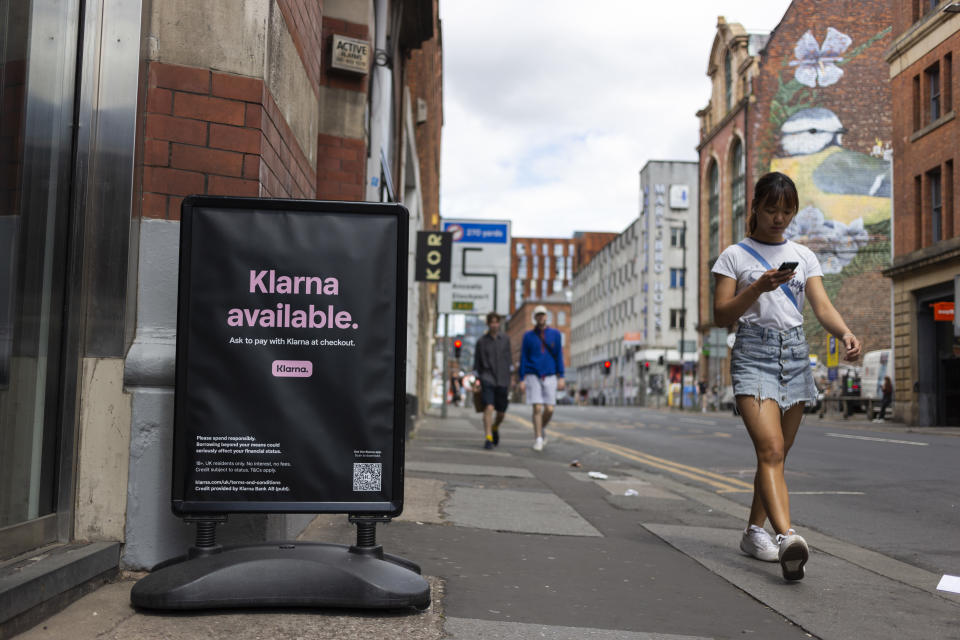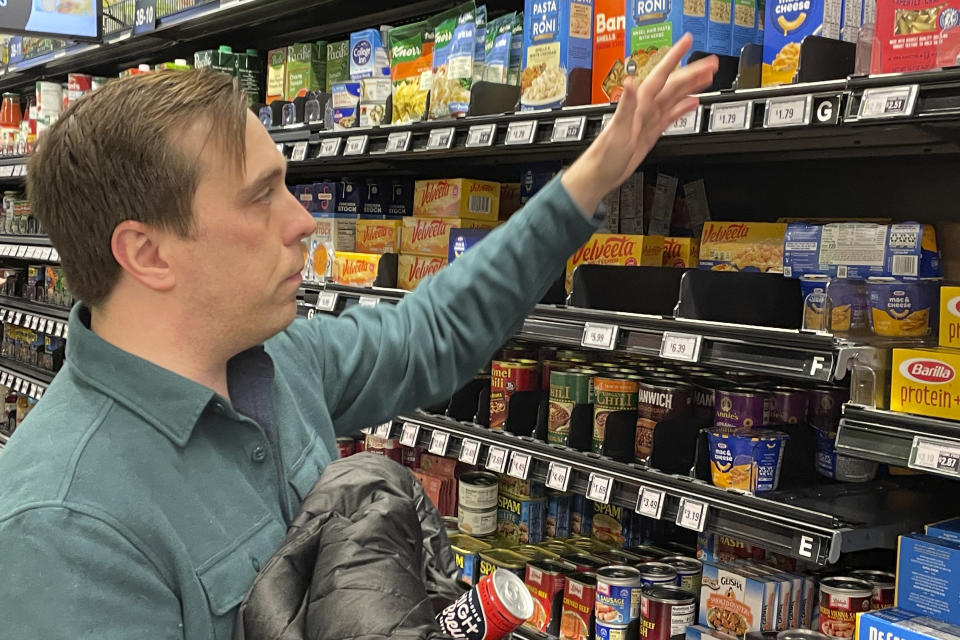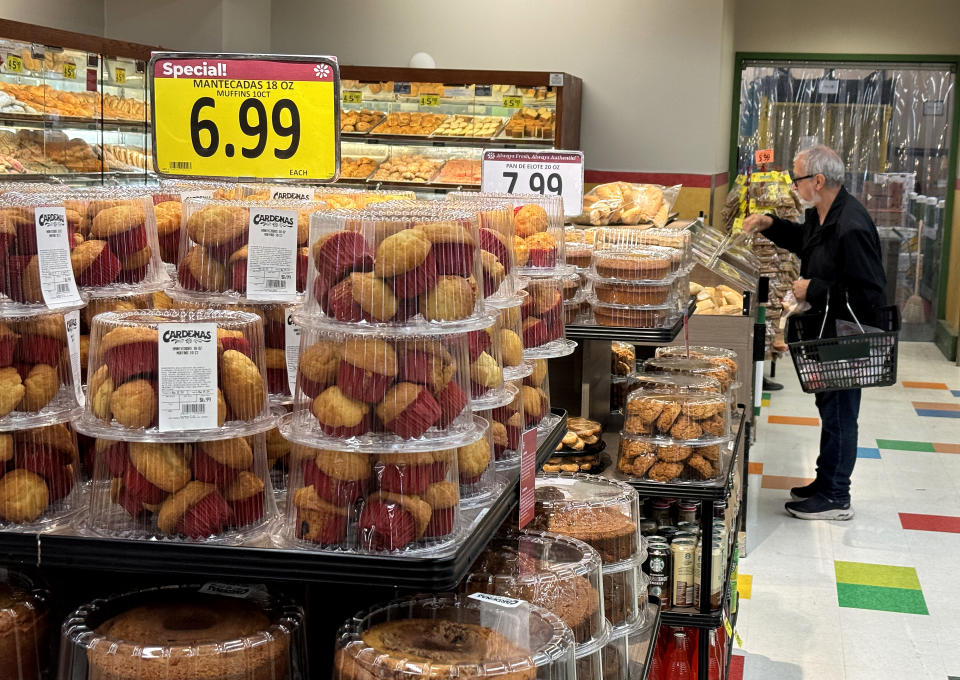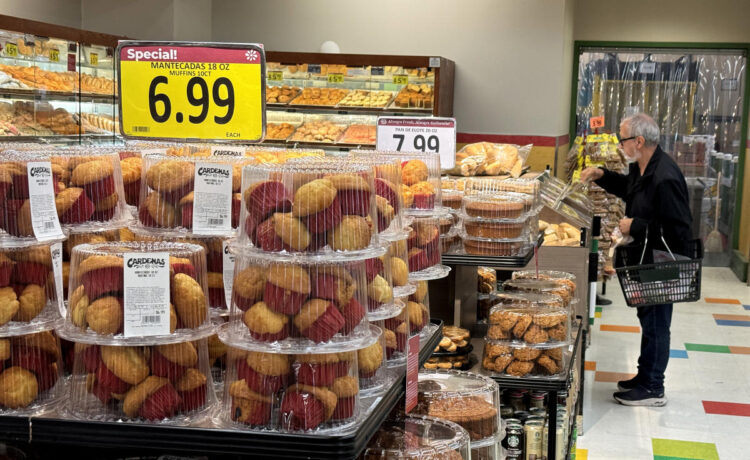Money is tight, food prices are soaring, and that’s turning more and more Americans to buy now, pay later options to stay afloat.
Last year, some 15 million consumers — or 6.5% of the US population — reported using BNPL installment loans to pay for groceries or manage their weekly food expenses, according to research from PYMNTS Intelligence. Out of that share, about 5.4% of the households using BNPL to afford groceries were low-income.
Meaning there was still a slim share of higher-earners, those making over $100,000 annually, using the popular “pay-in-four” installment loans to purchase food each month.
According to experts, the trend may bleed into this year as consumers across all income groups continue to grapple with climbing prices.
“As the cost of living rises, people find it harder to manage their budgets and cover their expenses,” attorney and personal finance expert Erika Kullberg told Yahoo Finance. “Therefore, BNPL offers a short-term answer by allowing shoppers to spread out payments over time.”
Read more: Credit card fees explained: 8 types you should know
Why pay upfront when BNPL is available even for takeout food?


Americans found some relief at the grocery aisle this month, as food prices remained flat for most items, according to the latest inflation reading.
Still, while food prices moderated in February, they remain 22.3% higher than 2020 levels. The uptick in costs has caused households across every income level to make sacrifices.
For instance, half of the consumers earning more than $100,000 said they cut back on nonessential spending at the grocery store. More than 60% of those earning under $100,000 said they had to cut back on spending due to high costs of food.
To save money at checkout, more people said they were switching to more affordable merchants. For example, shopping at Target (TGT) instead of Whole Foods. Others decided to purchase lesser quality foods, like forgoing organic produce for more affordable options.
Even enjoying a meal at a restaurant has become more expensive. Year-over-year, the inflation index for food away from home ticked up by 4.5% in February.
Enter BNPL.
“Finally paid off my Uber Eats order from January,” one X user tweeted. The Chicago resident said he ordered a takeout order for $44.88 and paid it off in four equal installments through BNPL.
Another woman took to X to say she used the popular pay-in-four loan for an $11.01 purchase at Juanchos Tacos — meaning a meal she ate in early March will be paid off in April.
“Younger generations, in particular, are used to digital transactions and value convenience, and why wouldn’t they be?” said Kullberg. “It’s quick, simple, and requires little thought.”
But not everyone is using BNPL, making major food chains like McDonald’s (MCD) go back to the drawing board to lure in consumers.
“Some consumers are just choosing to eat at home more often,” McDonald’s CFO Ian Borden said Wednesday in an investor conference. “Consumers working through dealing with all the inflation that’s kind of hitting their pocketbook across all areas of spend, and it’s obviously been significant.”
At least 90% of McDonald’s restaurants in the US offered breakfast or meal bundles priced under $4. Borden also noted that McDonald’s plans to offer even more deals this year to attract consumers, particularly those hit the hardest by inflation.
“Compelling offers at the right price points are going to attract consumers as they’re being more thoughtful about choices,” Borden said. “I think consumers in 2024 are going to be much more focused on affordability.”
One-third of high earners live paycheck to paycheck


As for who is struggling under the weight of climbing prices, it’s just about everyone.
As of January, more than half of Americans said they were living paycheck to paycheck, a sign that the rising cost of living may be taking its toll on consumers’ financial stability, a report by PYMNTS Intelligence found.
The share of those living paycheck to paycheck spanned income brackets and generations.
At least three-quarters of those earning less than $50,000 a year, and roughly two-thirds of middle-income earners — making between $50,000 and $100,000 — lived paycheck to paycheck in January. Add to that 36% making more than $200,000 who said they struggled to make ends meet between paychecks.
Those who didn’t use BNPL relied on credit cards to slowly pay off their groceries. A third of all US consumers, 31%, said they used a traditional credit card to purchase groceries in February, PYMNTS data showed.
“It reflects an accelerating shift in how consumers think about spending and credit,” researchers said.
BNPL can turn into a ‘double-edged sword’


While taking on a short-term pay-in-four loan to purchase groceries can be convenient, borrowers should be careful not to over-rely on these installment loans.
For one, you don’t want to risk overspending and failing to keep up with other debt loads.
“Using BNPL for smaller purchases may seem harmless in the moment, but you have to be certain not to let it get away from you,” Kullberg said. “It’s very easy to let all of these tiny purchases add up, resulting in tacking on unnecessary debt.”
Second, while BNPL is generally interest-free for smaller purchases, you could be charged interest for larger loans. Though BNPL isn’t a regulated market, delinquent payments will eventually be sent to collections, seriously affecting your credit rating.
Kullberg added: “If used responsibly, BNPL can be a great resource. However, it is a double-edged sword that can quickly turn against you if not used properly.”
Gabriella Cruz-Martinez is a personal finance and housing reporter at Yahoo Finance. Follow her on X @__gabriellacruz.
















